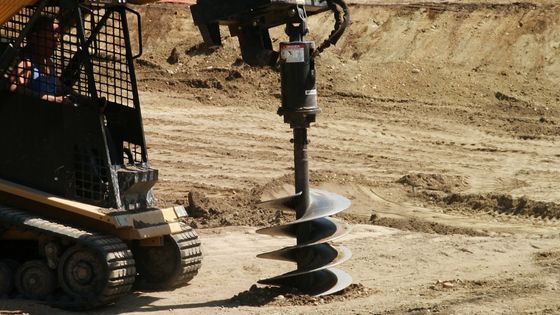Rock augers are essential tools for construction projects that require drilling through solid materials such as rock and concrete. These powerful machines can drill through even the toughest materials, but have you ever wondered how they work? In this article, we will explore the mechanics behind rock augers and how they are used to bore through solid materials.


Overview of Rock Augers
A rock auger is a drilling tool designed for drilling through tough materials such as rock, concrete, and asphalt. It consists of a cylindrical shaft with helical flights that rotate and move material up and out of the hole as it is drilled. The flights of the auger are designed to scoop up material as they rotate, allowing the auger to dig deeper and deeper into the ground.
The rock auger is powered by a hydraulic motor or gearbox that is attached to the drilling rig. The motor or gearbox provides the torque needed to rotate the auger’s shaft and flights, allowing it to drill through even the toughest materials.
Understanding the Mechanics of Rock Augers
The process of using a rock auger to drill through solid materials is a complex one, but it can be broken down into several key steps.
Step 1: Positioning
The first step in using a rock auger is to position the drilling rig in the desired location. The rig should be positioned over the area where the hole is to be drilled, and the auger should be lined up with the centre of the hole.
Step 2: Starting the Auger
Once the auger is in position, the operator can start the hydraulic motor or gearbox, which will begin to rotate the auger’s shaft and flights. As the auger rotates, the flights will start to scoop up material from the ground and move it up and out of the hole.
Step 3: Drilling
With the auger rotating, the operator can begin to slowly lower the auger into the ground. The flights of the auger will continue to scoop up material as they rotate, allowing the auger to drill deeper and deeper into the ground.
As the auger drills, it is important to monitor the speed and torque of the motor or gearbox to ensure that the auger is drilling at the appropriate speed and depth. If the auger encounters particularly tough material, such as a large rock, the operator may need to slow down or stop the auger to allow the teeth to break through the material.
Step 4: Removing the Auger
Once the auger has drilled to the desired depth, the operator can stop the motor or gearbox and begin to remove the auger from the hole. This is done by slowly raising the auger out of the hole while simultaneously rotating it in the opposite direction to release any material that may be stuck in the flight.
Step 5: Repeating the Process
After the auger has been removed from the hole, the process can be repeated to drill additional holes as needed. The operator can reposition the rig and auger, start the motor or gearbox, and begin drilling again.
Using a rock auger to drill through solid materials is a complex process that requires skill and attention to detail. The operator must position the rig and auger correctly, monitor the speed and torque of the motor or gearbox, and be prepared to stop and adjust the auger as needed to drill through tough materials.
Overall, rock augers are an essential tool for construction projects that require drilling through solid materials. From building foundations to bridge piers, rock augers are widely used in the construction industry to create holes of varying sizes and depths. They are often used in conjunction with other drilling tools and techniques to achieve the desired results.
Understanding how a rock auger works is crucial for anyone working in the construction industry. By understanding the drilling mechanics behind a rock auger, you can ensure that you use them safely and effectively on your construction projects. Whether you are drilling through concrete, rock, or asphalt, a rock auger can help you get the job done quickly and efficiently.

























